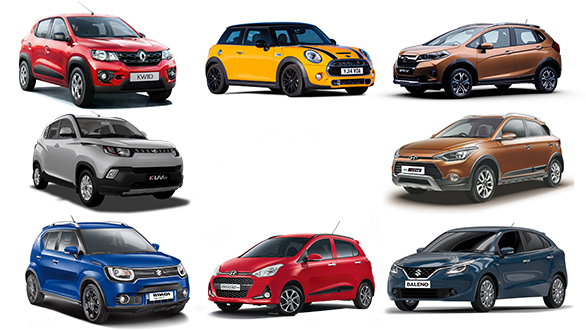Remember the time when your small cars bells and whistles comprised power windows, power steering, keyless entry, and the AC? All that may soon become history as the next-gen compact models under development vie for top-of-the-line AI driven driver assist and connected car features that are currently available in the soon-to-launch premium SUVs like the MG Astor and Mahindra XUV700.
These SUV-type features include AI-driven programs like driver drowsiness assist, camera and sensor-assisted lane driving, personalised cockpits, connectivity through smartphones and smartwatches for a bouquet of entertainment and information features.
According to tier-1 drivetrain and component major Bosch, these features have now attracted the interest of the mass market small car companies that are developing their next-generation models as well. “There are enquiries in the B-segment space and there are concepts being worked on as companies try to match the aspiration for ride experience with the willingness to pay for features like this.
The head start in the market has been in the UV1 and UV3 segment (SUVs priced under Rs 15 lakh) where we are seeing clear traction so they are the pilots for these technologies,” said Sandeep N, executive director & head of sales-mobility solutions, Bosch Ltd.
Auto industry sources said Suzuki and Toyota’s next geneartion under development models are among those looking at features like these. “The technology will see rapid proliferation because it has become very cheap so in the next generation of compact models many of these features will be added on. Already these features have become quite common in compact cars in Europe,” said automotive expert Hormazd Sorabjee.
Industry insiders say the proliferation of these new-age features will go from B-segment compact SUVs down to the more mass market hatchback cars.
“OEMs are already offering some connected features through mobile phone apps like locking-unlocking, light beam and horn adjustment, geo and time zoning etc. These features are now on offer in B-segment sub-4 metre SUVs like Nissan Magnite, Hyundai Venue or Tata Nexon but the penetration of ADAS features like advanced lane assist or driver monitoring are still low. Indian customers value connected features more,” said Ravi Bhatia, president of JATO Dynamics.
According to Bhatia, the features currently being adopted include adaptive cruise control, automatic parking, automotive head-up display, blind-spot monitor, driver monitoring system, forward collision warning, lane centering and lane change assistance, automatic emergency braking and brake assist system, and traffic sign recognition systems. “So far only XUV700 and Astor qualify for Autonomous Level-2 features but sub-Rs 20 lakh cars like the Kia Seltos already offer driver-assist features like the overtaking sensor,” he said.






